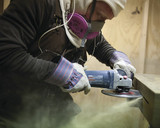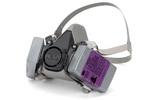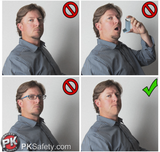Blog
How Do the New OSHA Crystalline Silica Rules Affect Construction Companies?
Crystalline silica is a common mineral that is found in materials that construction workers deal with every day – such as roads, buildings, and sidewalks. It is a common component of sand, stone, rock, concrete, brick, block and mortar. Common workplace operations involving cutting, sawing, drilling, and crushing of these materials often create crystalline silica dust exposure in construction. Scientific evidence shows that current exposure limits do not adequately protect worker health. The
…
Sep 22nd 2017
Black Friday Savings on Safety Equipment
The great thing about the
PK Safety Black Friday specials is you don't have to stand in line in the dark. Or miss your family meal. There will be no danger of being trampled.
What you do have is the opportunity for great savings from the comfort of your keyboard. The
3M Mold Remediation Respirator Kit is an excellent example. While this full-face respirator with P100 HEPA air filters is ideal for keeping mold spores from your lungs and eyes, it's also an outstanding all-around res
…
Nov 26th 2015
OSHA Respirator Fit Testing for a Large Organization
Fit testing your company employees for respirators can be thought of the same way the Chinese symbol for crisis incorporates the characters for danger as well as opportunity. Sure there's a chance for things to get completely messed up. Done incorrectly, your fit testing might result in long lines of employees standing idle for hours which would be embarrassing for the fit test administrator and bad for the bottom line. If you are in charge of fit testing for a large organization like a hospi
…
Mar 19th 2014
How To Tell If Your Respirator Mask Fits
We get two questions about
respirators more often than all other questions combined. People want to know what size mask to order, and they want to know how they can be sure the mask is fitting properly. Because these are such common questions, you'd think we'd have a quick and easy answer for each of them. But each question has some variables, and it's not so easy. Here's what you need to know to make sure your respirator mask fits correctly.
For this discussion we will limit the sco
…
Feb 24th 2014
Sensitivity Test for Mask Fitting: How to Administer a Respirator Fit Test
It's an employer's responsibility to fit test workers with the respirators used on their job sites. Most folks don't think about this unless they are in highly regulated fields. But under OSHA safety standard 1910.134 employers are required to show each worker using this lung protection equipment how to put on a respirator, how to position it on the face, and how to determine an acceptable fit. If you've never performed a fit test, here is a quick primer on how to use a
Qualitative Fit Tes
…
Jan 14th 2013
Who Can't Wear a Respirator?
Not everyone can wear a half- or full-face
respirator while working. There are several conditions spelled out in the OSHA standards where respirator masks either won't work, or put the wearer in danger.
The most frequent impediment to having a mask fit and therefore work properly is facial hair. OSHA is very specific in the new (1998) guidelines. In section 29 CFR 1910.134(g),
Use of Respirators, it states: "Facepiece seal protection. The employer shall not permit respirators with
…
Jun 20th 2012
Why Don't Employers Give Workers the Best Respiratory Protection?
"Why don't employers give their workers the best respiratory protection?" This is a question that we run into all the time. It basically comes down to two issues: fit testing and cost.
Fit Testing
Many employers believe that if they are not offering an approved mask to their workers, they don’t need to worry about fit testing. Unfortunately, this is a misconception. Since the only way to know for sure that a mask is doing its job is through fit testing, OSHA makes it a mandatory part
…
Sep 26th 2011








